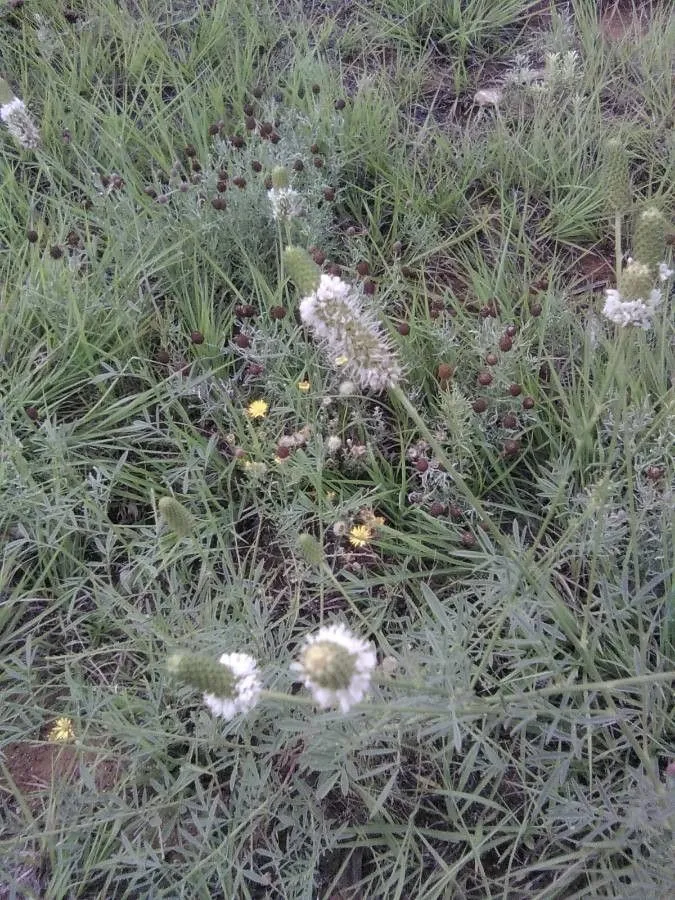
Author: Willd.
Bibliography: Sp. Pl., ed. 4, 3: 1337 (1802)
Year: 1802
Status: accepted
Rank: species
Genus: Dalea
Vegetable: False
Observations: C. & EC. Canada to N. Mexico
White prairie clover, known scientifically as Dalea candida, is a remarkable plant that belongs to the Fabaceae family. This perennial herb is notable for its striking appearance and beneficial ecological contributions.
Originating from central and eastern Canada and extending down to northern Mexico, white prairie clover thrives in these diverse geographical regions. Its preferred habitats include prairies, open woodlands, and rocky outcrops, often flourishing in well-drained soils.
The plant is distinguished by its elegant white blossoms, which cluster together forming elongated, cone-shaped flower heads. Each individual flower is small but collectively they create a visually appealing display that attracts a variety of pollinators, including bees and butterflies. The lush green foliage supports these flowers, providing a textured contrast that enhances its ornamental value.
White prairie clover plays a crucial role in its ecosystem. As a member of the legume family, it has the ability to fix nitrogen in the soil through a symbiotic relationship with root-dwelling bacteria. This natural process enriches the soil fertility, benefiting the surrounding plant community and contributing to overall ecosystem health.
The plant’s resilience and low maintenance needs make it a valuable addition to native plant gardens and restoration projects. Its deep root system allows it to endure drought conditions, further emphasizing its adaptability and hardiness.
First documented in the fourth edition of “Species Plantarum” in 1802 by the renowned botanist Willdenow, Dalea candida continues to be a subject of interest among botanists and plant enthusiasts. The historical and ongoing study of this species highlights its enduring significance and the continued efforts to understand and preserve its role within native landscapes.
In summary, white prairie clover is much more than just an aesthetically pleasing plant. It is a keystone species that supports biodiversity, enhances soil health, and exemplifies the beauty and functionality of native flora.
Eng: white prairie clover, white prairie-clover, white tassel-flower, slender white prairie-clover, white dalea, white parosela, white tasselflower
Fra: dalée blanche
En: White prairie clover, WHITE PRAIRIE-CLOVER, WHITE PRAIRIECLOVER, Slender white prairieclover, White dalea, White tassel-flower, Slender white prairie-clover, White parosela, White tasselflower
Fr: Dalée blanche
Nv: Niʼtsʼǫǫsii
Taken Jul 2, 2021 by eileen martha (cc-by-sa)
Taken Aug 20, 2015 by EOL − Matt Flower (cc-by-nc)
Growth habit>: Subshrub, Forb/herb
Family: Myrtaceae Author: (F.Muell.) K.D.Hill & L.A.S.Johnson Bibliography: Telopea 6: 402 (1995) Year: 1995 Status:…
Family: Rubiaceae Author: Pierre ex A.Froehner Bibliography: Notizbl. Bot. Gart. Berlin-Dahlem 1: 237 (1897) Year:…
Family: Sapindaceae Author: Koidz. Bibliography: J. Coll. Sci. Imp. Univ. Tokyo 32(1): 38 (1911) Year:…
Family: Asteraceae Author: A.Gray Bibliography: Pacif. Railr. Rep.: 107 (1857) Year: 1857 Status: accepted Rank:…
Family: Fabaceae Author: Medik. Bibliography: Vorles. Churpfälz. Phys.-Ökon. Ges. 2: 398 (1787) Year: 1787 Status:…
Family: Aspleniaceae Author: (Cav.) Alston Bibliography: Bull. Misc. Inform. Kew 1932: 309 (1932) Year: 1932…